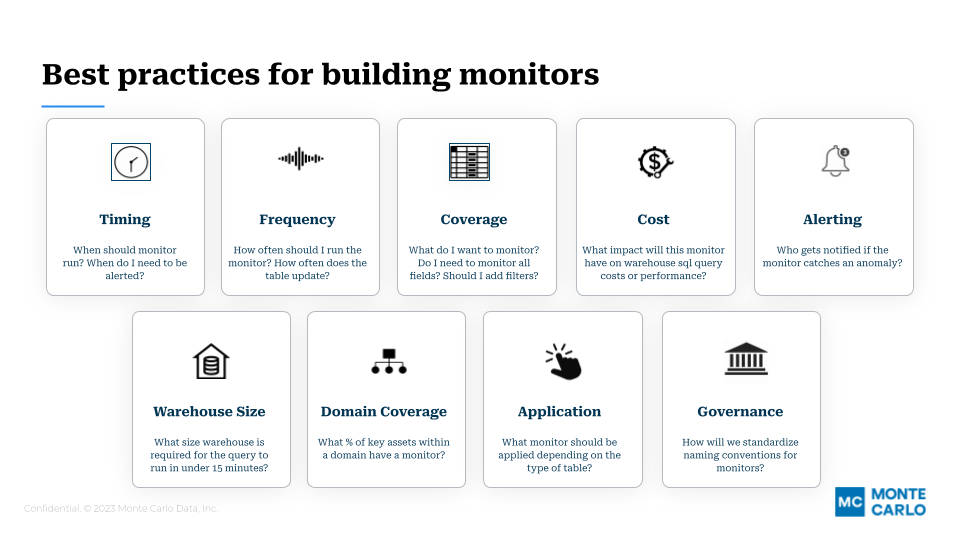🧑🎓 Monitors Overview
Monitor Types
At Monte Carlo, we have:
- Out of the box ML Monitors (Freshness, Volume and Schema Changes) which run hourly and check the metadata table for all tables.
- Custom ML Monitors (Field Health, Dimension Tracking and JSON Schema) which run on a user defined schedule and use ML to catch anomalous data changes within fields.
- Custom Rules Based Monitors (SQL, Field Quality, Referential Integrity and Comparison Rules) which run on a user defined schedule and do not use Machine Learning. These are manual checks which can be used to validate ways in which you know data may break.
This next section introduces these monitors at a high level and walks you through how to build each of the monitors for your own practical use case.
Monitors Best Practices
When building out monitors, answer the following questions to ensure you're building monitors that will help you accomplish your business objectives.
- Timing: When should monitors run? When do I need to be alerted?
- Frequency: How often should monitors run? How often does the table update?
- Coverage: What needs to be monitored? Do I need to monitor all fields? Should I add filters?
- Cost: What impact will this monitor have on warehouse sql query costs or performance?
- Alerting: Who gets notified if the monitor catches an anomaly?
- Warehouse size: What size warehouse is required for the query to run in under 15 minutes?
- Domain Coverage: What percent of key assets within a domain have a monitor?
- Application: What monitor should be applied depending on the type of table?
- Governance: How will we standardize naming conventions for monitors?

Updated 6 months ago
